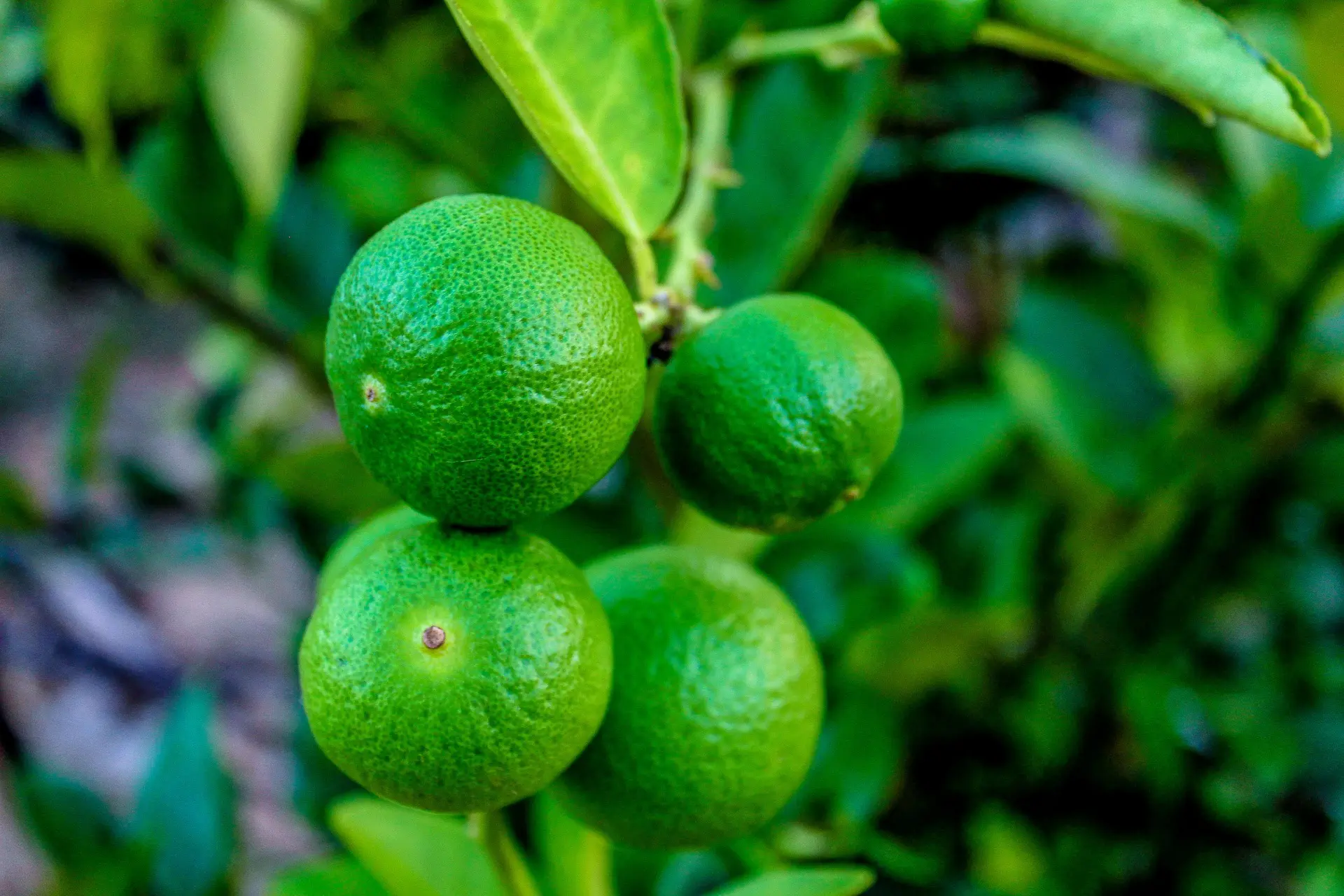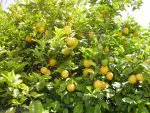This post contains affiliate links. If you buy something from one of our links we may earn a commission. Thanks
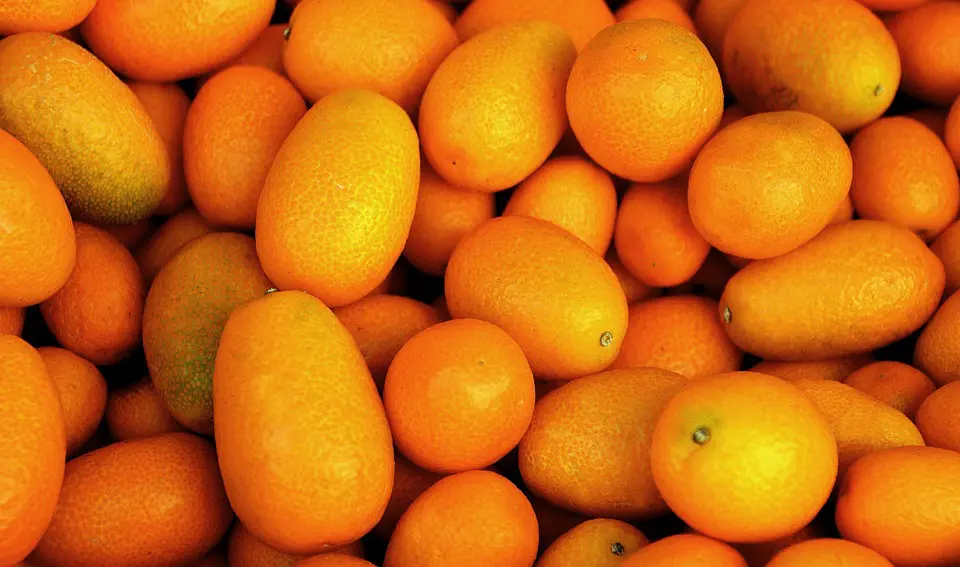
If you love the sweet and sour flavor of kumquats but don’t have a lot of space in your garden, don’t worry! Growing kumquats in pots is a great option for indoors, making them perfect for small spaces such as patios, balconies, and even indoors.
Growing kumquats in pots indoors requires a sunny window with at least 6 hours of direct sunlight. Use a well-draining soil mix and a pot with drainage holes. Water when the top inch of soil feels dry and feed with a balanced citrus fertilizer every 6-8 weeks. Maintain a humidity level of 40-50% for optimal growth.
In this blog post, we will discuss everything you need to know about growing kumquats in pots, including how to choose the right pot and soil, where to place your pot, how to water and fertilize your tree, and how to harvest and store your homegrown kumquat fruit.
So grab a pot and get ready to enjoy the delicious taste of homegrown kumquats all year round!
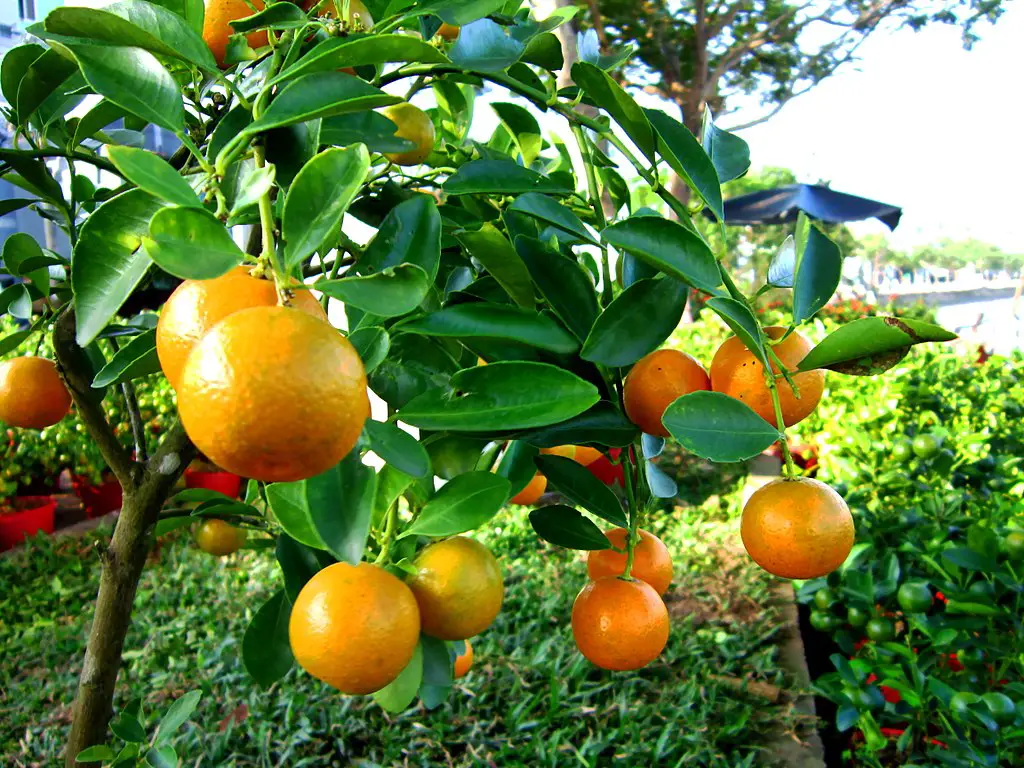
What Are Kumquats?
Dwarf kumquat trees, also known as Citrus Fortunella spp. or citrus japonica, are small, ornamental citrus plants that are native to China.
There seems to be a disagreement on where to classify kumquats but no disagreement on growing them. Read more about kumquats here.
These citrus trees are popular for their small, tart kumquats that are often used in cooking and beverages.
Growing Kumquats In Pots Indoors
If you’re thinking about growing your own dwarf kumquat, it’s important to understand the proper care and maintenance required to keep your tree healthy and productive.
In this blog post, we’ll go over the key points for dwarf kumquat tree care indoors in pots.
Planting And Location
When it comes to planting your dwarf kumquat, it’s important to choose the right location.
Dwarf kumquats prefer well-draining soil and full sun exposure, so it’s a good idea to plant your tree in a sunny spot that gets plenty of direct sunlight.
They also prefer a soil pH between 6.0 and 6.5, so it may be necessary to add lime to your soil to adjust the pH if needed.
They will do well at room temperature indoors.
When planting your dwarf tree, it’s important to give it enough space to grow. Dwarf kumquat trees can reach up to 8 feet tall and wide, so be sure to leave enough room for the tree to spread out.
It’s also a good idea to plant your tree in an area that is protected from strong winds, as this can damage the branches and fruit production.
Before planting your dwarf kumquat tree, be sure to prepare the soil by adding some compost, worm castings, or other organic matter to improve the soil structure and nutrients.
Don’t use garden soil in containers as it will compact too much and may bring outdoor pests inside.
Choose a pot that is larger than the root ball and set your tree in it filling all around it with soil.
Don’t plant it deeper than it was grown in the nursery. Pack down the soil and then water it to remove any air pockets in the root zone.
Watering And Fertilizing
Proper watering is crucial for the health and growth of your dwarf kumquat tree. They require good soil drainage to thrive.
Dwarf kumquat plants prefer to be kept in moist soil, but they should not be allowed to sit in the excess water of a tray or in any standing water.
Use a potting mix that has good drainage. Overwatering can result in root rot.
To determine if your tree needs watering, check the soil moisture by sticking your finger about an inch into the soil. If it feels dry at that depth, it’s time to water.
It’s a good idea to water your tree slowly and deeply to encourage deep root growth.
In addition to regular watering, dwarf kumquat trees also benefit from fertilization.
There are a few different fertilizers that are suitable for dwarf kumquat trees, including citrus fertilizers and compost.
It’s a good idea to fertilize your tree once a month during the growing season (spring through fall) using a fertilizer that is high in nitrogen, phosphorous, and potassium.
Avoid using too much fertilizer, as this can lead to leaf burn or other problems.
Pruning And Shaping
Pruning is an important part of dwarf kumquat tree care, as it helps to encourage healthy growth and fruit production.
Dwarf kumquats should be pruned annually in the late winter or early spring to remove any dead or damaged branches and to shape the tree.
When pruning young trees, be sure to use clean, sharp pruning shears to make clean cuts.
In addition to annual pruning, it’s also a good idea to shape your dwarf kumquat tree as it grows.
Dwarf kumquats can be trained to grow with a single trunk or multiple trunks, depending on your preference.
To encourage a single trunk, remove any competing branches and prune back the main trunk to encourage lateral branching.
If you prefer a multi-trunked tree, allow the tree to grow naturally and prune off any branches that are rubbing against each other or crossing.
Pest And Disease Management
Like all plants, dwarf kumquats are prone to pests and diseases. Some common pests that can affect dwarf kumquat plants include scales, mites, spider mites, and aphids.
To control pests on a dwarf kumquat tree, you can try the following methods:
1. Physical removal: In some cases, you may be able to simply remove pests from the tree by hand. For example, you can use a cotton swab or a toothbrush dipped in alcohol to remove small clusters of aphids or scales.
2. Neem oil: Neem oil is a natural pest control option that can be effective against a wide range of pests. It works by disrupting the growth and reproduction of pests, and it is safe for use on edible plants. To use neem oil, mix it with water according to the manufacturer’s instructions and spray it on the affected areas of the tree.
3. Insecticidal soap: Insecticidal soap is another natural pest control option that is safe for use on edible plants. It works by breaking down the outer layer of a pest’s exoskeleton, causing them to dehydrate and die. To use insecticidal soap, mix it with water according to the manufacturer’s instructions and spray it on the affected areas of the tree.
4. Pesticides: If you are unable to control pests using natural methods, you may need to use a chemical pesticide. Be sure to follow the instructions on the label and take precautions to protect yourself and the environment.
It is important to keep in mind that pests can often be prevented by maintaining the overall health of the tree. This can include providing the tree with the proper care, such as watering and fertilizing it regularly and protecting it from extreme weather conditions.
What Is The Kumquat Growing Zone And Hardiness?
Kumquat trees are generally hardy and can tolerate a wide range of temperatures. They are native to warm, tropical regions and are well-suited to grow in USDA hardiness zone 9-11.
However, they can also be grown in cooler climates in containers as long as they are provided with the proper care.
What Is The Lowest Temperature Kumquats Can Survive?
Kumquat trees are generally hardy and can tolerate a wide range of temperatures, but they do best in warm, sunny locations with well-draining soil.
Since they are native to warm, tropical regions and are well-suited to grow in USDA plant hardiness zones 9-11, where average winter temperatures are above freezing.
However, kumquats can also be grown in cooler climates as long as they are provided with the proper care.
If you are trying to grow a kumquat in a cooler climate, you may need to provide it with some protection during the winter months.
This can include placing a layer of mulch around the base of the tree, wrapping the tree in burlap, or providing it with a temporary cover.
Or you can grow it in a container and bring it indoors when the weather turns cold.
The lowest temperature that a kumquat can survive will depend on the age and health of the tree, the type of kumquat, and the conditions under which it is growing.
Some kumquats may be able to survive temperatures as low as 18-20°F if they are provided with adequate protection, while others may be more sensitive to cold and may be damaged or killed by temperatures below freezing.
Generally, young trees will be less hardy than larger trees that have become acclimated.
Harvesting And Storing Kumquats
Kumquats are small citrus fruits that are typically harvested in the winter or early spring. Here are some tips for harvesting and storing kumquats:
The best time to harvest is to choose fully ripe kumquats that are firm and have bright orange fruits.
Use scissors or pruning shears to cut the kumquats from the tree, taking care not to damage the branches.
Sort through the kumquats and discard any that are overripe or damaged. Remember they have edible skin that is sweeter than the fruit itself.
To store kumquats, place them in a plastic bag and keep them in the refrigerator for up to a week. Kumquats can also be frozen for longer storage.
To freeze kumquats, simply wash and dry the fruit, then slice them into thin wedges and place them in a single layer on a parchment-lined baking sheet.
Once they are frozen, transfer the wedges to a resealable bag or container and store them in the freezer.
To preserve kumquats, you can also make candied kumquats, marmalade, or pickles. Simply follow a recipe for your desired method of preservation.
What Do Kumquats Taste Like?
Kumquats have a unique flavor that is a combination of sweet and sour. The skin of a kumquat is sweet, while the flesh is sour.
Some people describe the flavor as similar to that of an orange, but with a tart twist.
Kumquats are often eaten raw and can also be used to add flavor to dishes such as salads, desserts, and cocktails.
They can also be preserved in various ways, such as by making marmalade or pickles.
How Do You Use And Eat Kumquats?
There are many ways to use and eat kumquats. Here are a few ideas:
Eat them raw: Kumquats can be eaten whole, skin and all. They are typically sweet on the outside and tart on the inside.
Make a sauce: Kumquats can be sliced and simmered with sugar and water to make a sweet and sour sauce. This sauce can be used to top desserts such as ice cream or cake, or it can be used as a glaze for meat or poultry.
Preserve them: Kumquats can be made into marmalade or pickles. Simply follow a recipe for your desired method of preservation.
Add them to salads: Kumquats can be sliced and added to salads for a burst of flavor.
Use them in cocktails: Kumquats can be sliced and added to cocktails for a burst of flavor.
Use them in baking: Kumquats can be baked into cakes, bread, and other desserts for a burst of flavor.
Use them in savory dishes: Kumquats can be sliced and added to savory dishes such as stir-fries or roasted meats for a burst of flavor.
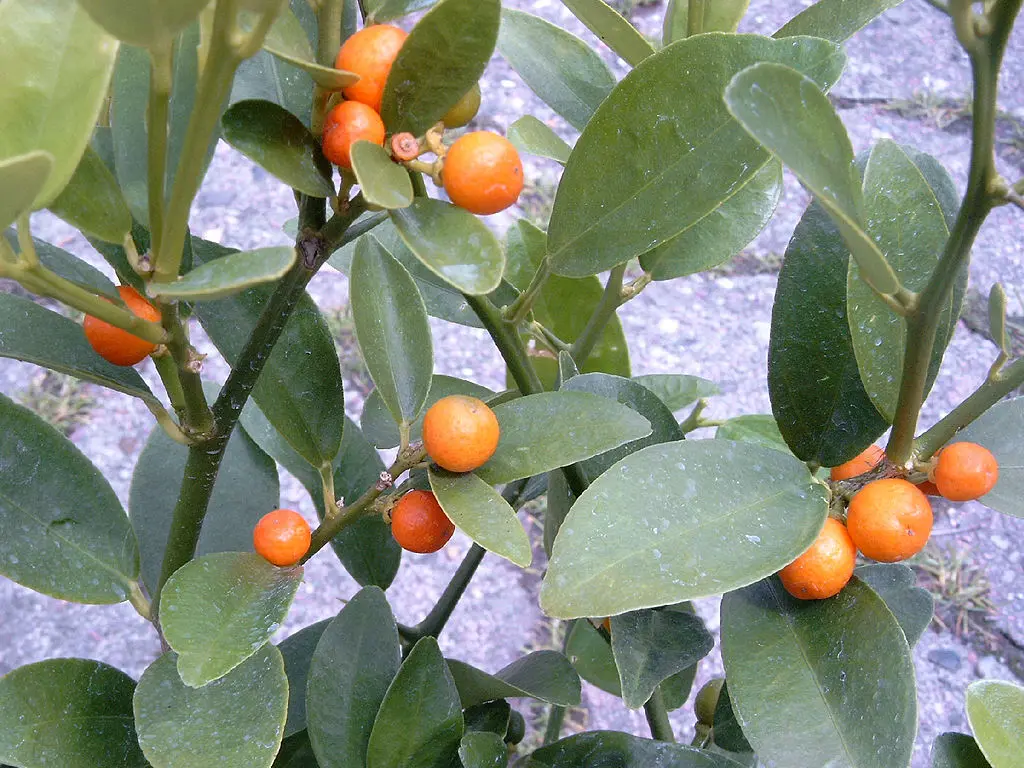
FAQ
When Do Kumquat Trees Bear Fruit?
Kumquat trees typically bear fruit in the early spring and can continue to bear into the early summer.
How Long Before Kumquats Bear Fruit?
In general, kumquats can take several years to reach maturity and begin bearing fruit. Some trees may begin producing fruit within 2-3 years of planting.
If you buy a 2 or 3-year-old kumquat tree from a nursery you may even get fruit the first year.
How Big Do Kumquat Trees Get?
The size of a kumquat tree will depend on the specific variety and the growing conditions.
Some kumquat trees are small and compact, while others can grow to be quite large.
On average, outdoor kumquat trees can reach heights of 15 feet and similar spreads. However, varieties in pots can grow 6-8 feet.
Are There Dwarf Kumquat Trees?
Yes, there are dwarf varieties of kumquat fruit trees that are specifically bred to be smaller in size.
These varieties are ideal for growing in small gardens or in pots on a patio or balcony.
Dwarf kumquat trees are typically smaller than standard kumquat trees and may reach heights of only 6-10 feet (1.8-3 meters) at maturity.
These dwarf trees also have a more compact growth habit and may have smaller leaves and fruit than standard varieties.
Some popular dwarf kumquat varieties include the Nagami kumquat tree, Meiwa kumquat tree, and Marumi.
These varieties are hardy and easy to grow, and they produce delicious, small, orange-colored fruit.
If you are interested in growing a dwarf kumquat tree, you can purchase one from a local nursery or gardening center.
You can also look for a dwarf kumquat tree for sale online or at specialty citrus tree retailers.
Be sure to research the specific variety you are interested in to get an idea of its size and care requirements.
Final Thoughts
In conclusion, dwarf kumquat trees are a beautiful and delicious addition to any home. They can easily be grown indoors in pots.
With proper care, including proper planting and location, regular watering and fertilizing, annual pruning and shaping, and pest and disease management, you can enjoy a healthy and productive dwarf kumquat tree for years to come.
Learn more in my article about growing indoor citrus trees.
Don’t forget to harvest and store your kumquats properly to ensure you can enjoy their fresh flavor all year round.

